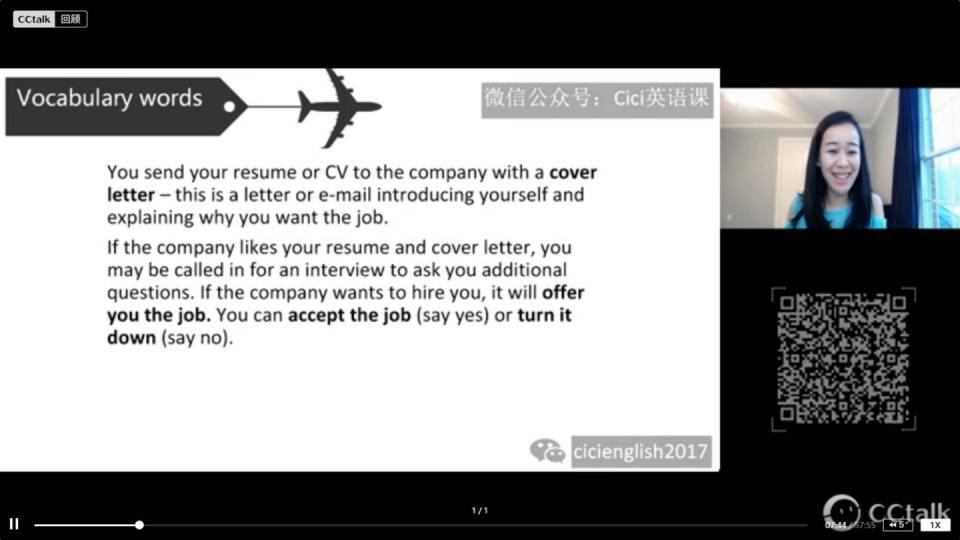A look into China’s future: Unravelling China’s edtech landscape
In the edtech sector, China has seen strong support from the government as well as the venture capital community
Celebrity and superstar teacher on Hujiang’s website
A look into China’s future: Unravelling China’s edtech landscape was written by Jeriel Tan for TechNode.
In a country with the world’s largest population of English learners, education is a serious business. There are roughly about 300 million people learning English in China today, with 50 million of them learning it in schools. This number is set to soar in the near future as China’s government has already implemented compulsory second language education in schools since 2001 under the ‘3+X’ gaokao system.
As staggering as these numbers are, the Chinese English-language market is just a snapshot of the whole education industry as a whole. With the total average student population at 260 million, served by about 15 million teachers, coupled with a heavy cultural emphasis on education, the market is set for an explosion that has both technology startups and venture capitalists sit up and taking notes alike.
China in recent years have aggressively pushed various educational initiatives and reforms such as the abovementioned revamped gaokao system, and also improving literacy rates amongst children and developing rural schools. One such initiative deserves special mention: the change in direction to focus on Science, Technology, Engineering and Medicine (STEM) content, as well as the method of delivery: Massive Open Online Courses (MOOCs). In light of these changes, progress and uptake in education technology (edtech) in China has been highly successful with no lack of local and international players in the highly competitive landscape.
Content is king: Delivering high-quality content
In a country where good teaching is either scarce or highly localised, technology has stepped in to fill in the gaps for people who are hungry to learn but have no access to resources. Students are willing to spend the time and effort, and this captive audience has given birth to a whole new industry where startups are jostling to be the go-to platform for online learning.
These startups fight on a few fronts, and the most important of them all is content. International startups have a leg up here with a vast repertoire of English content, and many have deep pockets to win over the Chinese consumer. Leaders such as Udemy, Coursera, and Udacity have established a presence in China, although for most it came at a cost as they adjusted to the culture and local idiosyncrasies.
Also Read: With a price-sensitive market, EdTech startups need to establish a good pricing model
Homegrown startups are more dominant here because they understand the needs and cultural context. One such example is in the rise of superstar teachers and the influence that celebrity teachers wield over vast audiences. Hujiang, one of the bigger local education startups that closed a US$157 million series D round in 2015, understands this very well. They developed CCtalk, an online e-learning platform that allows teachers to teach and interact with students in real time, allowing for good teachers to cross geographical barriers and build up their superstar reputation with thousands of student tuning in at the same time.

Teacher giving English lessons over the web
Local strategies such as using superstar teachers and result-focused content are what brings students to the platform, and ultimately revenue. Unsurprisingly, the majority of the global edtech funding has gone to these local Chinese platforms who are now armed with the cash to bring more content in more languages to students in China and beyond.

Real-time data on Hujiang’s online learning platform. Image credit: Hujiang
Teaching up and down the education supply chain
In addition to the online education platforms dominating the edtech scene, startups are also adapting technology in other ways to serve this market.
The use of technology is increasingly becoming more prevalent in educating children all over China, and schools are introducing technology to children at younger and younger ages. At the primary and secondary levels, schools have become more interested and are taking an active role in introducing new technology such as 3D printing, programming, and robotics in their curriculum. While the media hype might be temporary, these efforts have shown to have a substantial impact in changing the lives of China’s new generation of digital natives. In fact, at TechCrunch Shanghai, we saw that a lot of attention was given to our inaugural TechCrunch for Kids, which saw a large number of participants for both the workshops and hackathon.

Co-founder and Director of Cialfo, Stanley Chia. Image credit: Cialfo
In turn, interest for these non-conventional subjects has also seen an spike in popularity and parents are eager to get a headstart for their kids with additional tutoring guidance outside of school. This derivative market has grown to be a substantial industry in its own right, with the private tutoring market in China to grow to US$40.07 billion by 2021, at a CAGR of more than 11 per cent. While larger startups will look to dominate this market, I believe there will still be space for smaller players to get a slice of the pie if they can leverage on technology early to be first movers in their local spaces.
On the other end of the spectrum, startups like Cialfo, a B2B SaaS startup is targeting the tertiary market and related businesses. They also represent an integral part of the edtech industry; their presence shows that the Chinese education ecosystem is mature enough to sustain companies that operate on a B2B basis. More often than not, this will help internationalise the student population in China and abroad, increasing the market size for startups looking to target this segment of students.
When asked about the issue, Stanley Chia, the co-founder of Cialfo, said that, as Chinese universities start to gain more recognition internationally, “The number of students who may prefer to stay in China rather than explore overseas education will definitely increase. So will the number of students from abroad who are interested to study in China.” This sentiment on the ground is backed by studies, as shown in a recent Australian government report.
Also Read: How can AI help improve learning? Some trends in edtech and education
Venture capital in the edtech scene
In this area, we have seen strong support from the government as well as the venture capital community. There is generally a positive outlook for the industry, although there have been some voices arguing that not everything is a bed of roses and more caution is needed to balance the hype.
Even then, the number of exits by investors in these Chinese edtech companies (mostly those from the online education sector) have bolstered investor confidence in the industry. More and more venture capital funds are interested in investing in the education vertical, and the government has explicitly encouraged the entrance of private funds in the industry.
Hans Tung, a managing partner at GGV Capital, was quoted in the Fortune Global Forum as saying that “people are investing more in education to build the next generation of internet companies leveraging mobile internet or distance learning.” This seems to be the trend as people are leveraging new technology such as artificial intelligence and machine learning to better prepare students to learn better, no matter where they are in the country.
Meta Snapshot
It seems like it’s all boomtown in the Chinese edtech scene, with progress made on all fronts, most notably in the last five or six years. Expect the market to expand, but also big edtech startups are going to mature and grow more consistently then they have been. There is still going to be space for smaller entrants to join the fray, but with technology becoming commonplace, expect barriers to entry and consumers’ expectations to rise.
The Chinese government has set the ball rolling in the right direction, introducing a slew of changes: from having more flexibility into the curriculum to encouraging private players into the edtech scene. However, the government cannot control everything, but expect them to heavily influence the direction of growth in this particular aspect in the coming years.
2018 and beyond looks to be rosy enough for the ecosystem, although startups will still need to be aware of the work needed in this ultra-competitive landscape. A dynamic and robust year is expected of the education scene in China, and we too are looking to celebrate their successes and stories at our upcoming ChinaBang competition happening this coming March.
—
The article A look into China’s future: Unravelling China’s edtech landscape first appeared in TechNode.
The post A look into China’s future: Unravelling China’s edtech landscape appeared first on e27.



